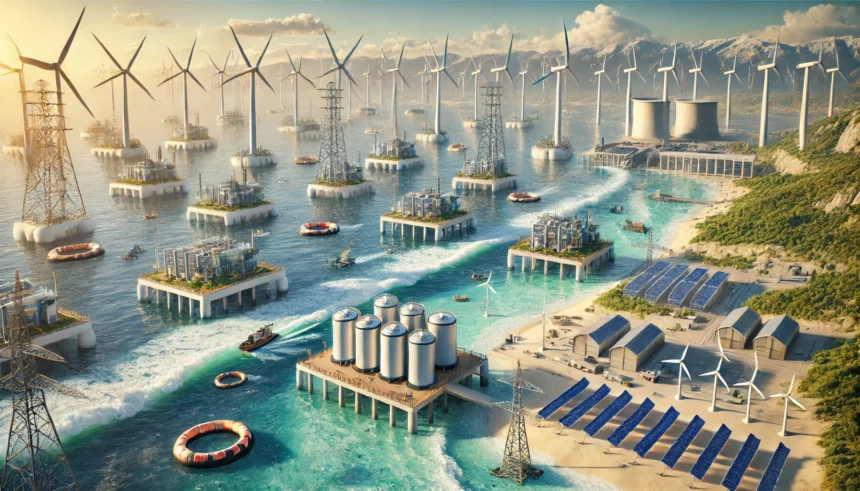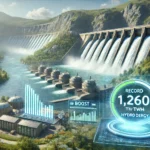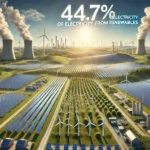Renewable energy is taking center stage in our efforts to create a sustainable future. By tapping into resources like sunlight, wind, and water, we can make our energy systems more efficient and environmentally friendly. Recent innovations are making these technologies even more effective, helping us move towards a greener world.
Impact on Energy Efficiency and Sustainability
Renewable energy sources have a massive impact on both energy efficiency and sustainability. Here’s how:
- Reduced Transmission Losses: Solar panels and wind turbines can be installed close to where electricity is used, cutting down on energy lost during transmission.
- Improved Efficiency: Modern solar panels now convert over 22% of sunlight into electricity, a significant leap from 15% a decade ago.
- Environmental Benefits: Renewables produce minimal greenhouse gases, crucial for tackling climate change.
- Sustainable Resources: Unlike fossil fuels, renewable resources like wind and sunlight are endless and don’t harm the environment.
Renewable energy also boosts energy security by reducing reliance on imported fuels and can shield economies from global energy market fluctuations. Plus, the renewable energy sector is a hotbed for job creation and innovation.
Innovations in Wind, Ocean, and Bioenergy
Wind Energy
- Floating Offshore Wind Turbines: These can be placed in deeper waters where winds are stronger and more consistent. Hywind Scotland, the first floating wind farm, has shown the potential of this technology.
- Advanced Blade Designs: Using materials like carbon fiber, modern wind turbine blades are lighter and more flexible, improving performance and reducing maintenance costs.
Ocean Energy
- Tidal Stream Generators: These underwater turbines harness the kinetic energy of tidal currents, offering a reliable and predictable energy source. The MeyGen Project in Scotland is a leading example.
- Wave Energy Converters: Devices like oscillating water columns capture energy from ocean waves and convert it into electricity. Advances in this area are increasing efficiency and reducing costs.
Bioenergy
- Advanced Biofuels: Second and third-generation biofuels are made from non-food biomass and algae, offering higher energy yields and lower greenhouse gas emissions.
- Biogas Upgrading Technologies: New processes like membrane separation enhance the purity of biogas, making it suitable for natural gas grids and vehicle fuel.
Future Trends in Renewable Energy
Advanced Energy Storage
- Enhanced Storage Solutions: Technologies like lithium-ion and flow batteries will help address the intermittent nature of solar and wind energy, ensuring a stable supply.
- Grid-Scale Projects: Large battery installations, such as Tesla’s Megapack, will become more common, providing backup power and grid stability.
Green Hydrogen Production
- Clean Fuel: Green hydrogen, produced using renewable energy, can power industries and transportation, playing a key role in reducing carbon emissions.
- Significant Investments: The European Union aims to install 40 GW of electrolysers by 2030, underscoring the growing focus on green hydrogen.
AI and Big Data Integration
- Optimized Performance: AI and big data can enhance predictive maintenance and energy output forecasting, making renewable systems more efficient.
- Examples in Action: AI platforms like Google’s DeepMind are already improving wind energy output predictions.
Floating Solar Farms
- Efficient Land Use: Floating solar panels on lakes and reservoirs save land and benefit from the cooling effect of water, increasing efficiency.
- Large-Scale Projects: The world’s largest floating solar farm in China’s Anhui province showcases the potential of this technology.
Offshore Wind Expansion
- Deeper Waters, Stronger Winds: Offshore wind farms, especially with floating turbines, can capture stronger and more consistent winds.
- Major Projects: The UK’s Dogger Bank Wind Farm, set to be the largest in the world, exemplifies the rapid growth of offshore wind energy.
Conclusion
The shift to renewable energy is transforming our world, making our energy systems more efficient and sustainable. Innovations like floating wind turbines, tidal generators, and advanced biofuels are leading the way. As we embrace these technologies, we are not only protecting our planet but also boosting energy security and economic growth. The future of renewable energy is bright, and continued advancements promise even greater progress.
















